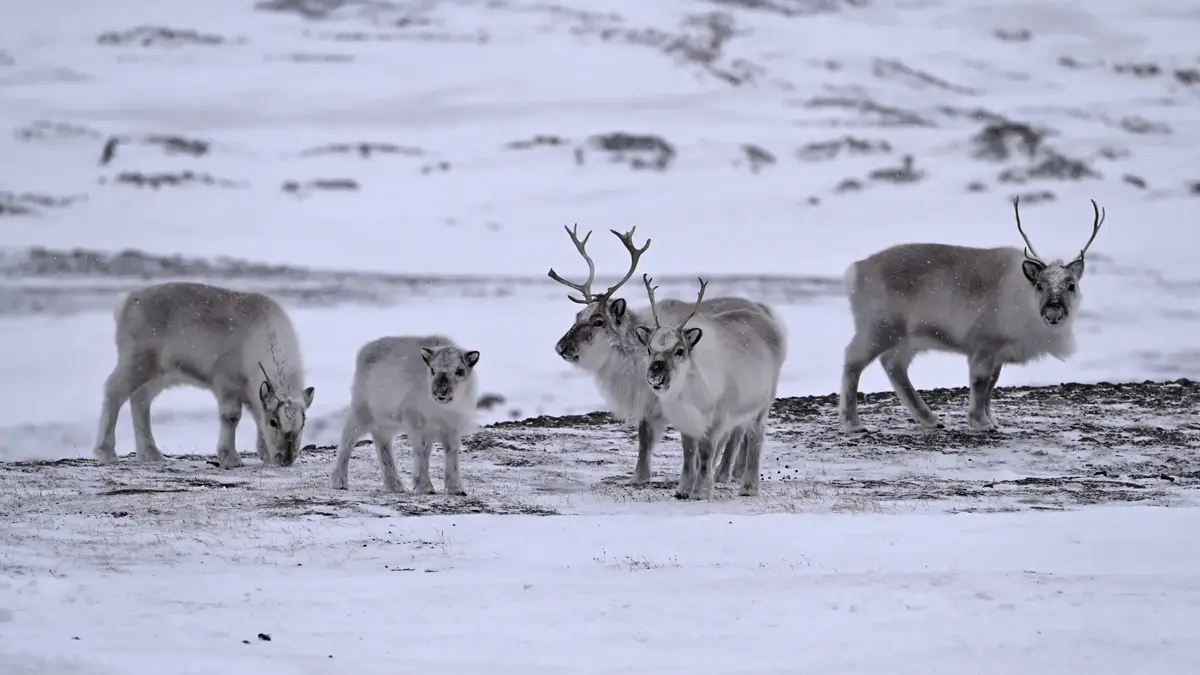Behaviour and living conditions
Reindeer in Svalbard do not gather in flocks like their wild counterparts on the mainland; they are usually solitary or in small groups of two to six. Their placid disposition means one can get quite close to Svalbard reindeer. They have no natural enemies in Svalbard, but arctic foxes eat reindeer that have died of starvation. The reindeer’s diet is diverse; it will eat essentially any plant it finds. Nevertheless, finding enough food can be a challenge, especially in the winter. Still, most reindeer do not die because there is too little food: they die of starvation because grazing on rocky, gravelly ground has worn down their teeth to the point where they can no longer take in enough food. In summer they graze almost constantly to store fat for the winter. A reindeer can put on ten kilogrammes of fat in a summer, if the food supply is adequate. It uses this fat in winter, when finding food is harder. Some winters, the snow is wind-packed and extremely hard. Sometimes rain falls in winter and locks the reindeer’s food under a hard shell of ice. Winters like this kill many reindeer. In addition, many females who survive will not give birth to a calf the following summer. For this reason, the reindeer population at any given location in Svalbard varies considerably from year to year.
- 1/1
Svalbard reindeer. Photo: Svalbard Museum
Distribution
The Svalbard reindeer is found only in Svalbard, between 76° 20¢ N (Sørkapp) and 80° 40¢ N (Phippsøya north of Nordaustlandet). It may have come to Svalbard as early as 10 000 years ago.

